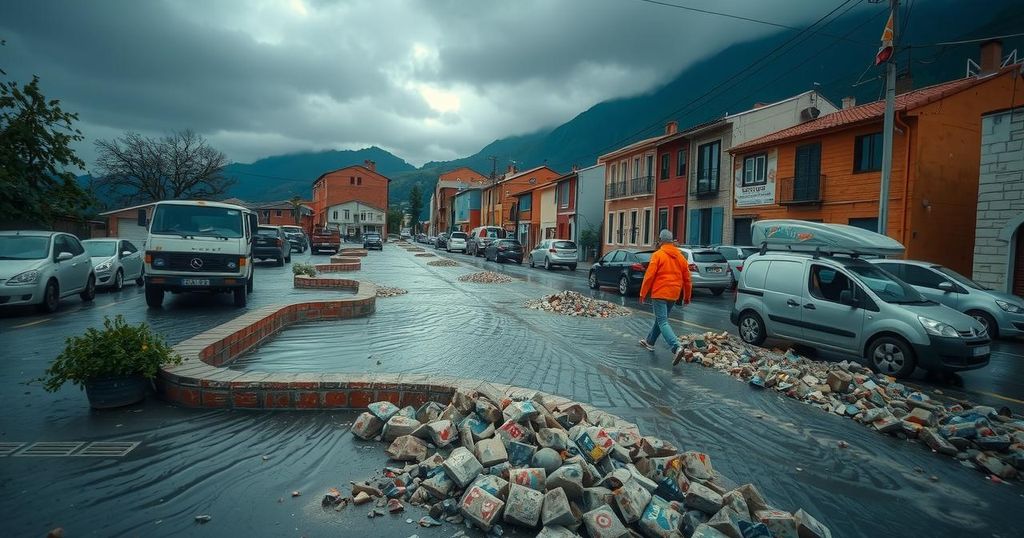Understanding the Tragic Floods in Eastern Spain: A Climate Change Catastrophe

On October 31, 2024, eastern Spain experienced devastating flash floods due to unprecedented rainfall, resulting in the deaths of at least 158 individuals, primarily in Valencia. The rapid deluge caught many residents off guard, leading to tragic outcomes as people became trapped in vehicles and homes. Climate change appears to be a significant factor in the increased intensity of such storms, which serves as a pressing warning for future environmental management efforts.
On October 31, 2024, eastern Spain experienced catastrophic flash floods, leading to the tragic loss of at least 158 lives, predominantly in the Valencia region. The floods resulted from intense downpours that inundated communities with little to no warning, trapping many residents in their vehicles, homes, and businesses. Recovery efforts are ongoing, with authorities continuing to search for several missing individuals amid the destruction. The floods arrived following an astonishing deluge that overwhelmed river basins, catching people off guard as they went about their daily routines. The region of Chiva recorded rainfall within a mere eight-hour period that surpassed the total from the past 20 months, an event deemed “extraordinary” by meteorological experts. The underlying causes of this disaster are linked to human-caused climate change, characterized by warmer air capable of holding more moisture and potential shifts in the jet stream, which influence extreme weather occurrences. The floods were attributed to a specific phenomenon known as a cut-off lower pressure storm system, which become stationary over the area and released relentless rain. Furthermore, the unusually high temperatures of the Mediterranean Sea, which reached record levels in mid-August, exacerbated the situation. This incident marks the most lethal flooding event in Spain’s recent history, surpassing previous calamities, including catastrophic floods in 1957 and a deadly torrent in Biescas in 1996.
The unprecedented floods in eastern Spain are a stark reminder of the growing impact of climate change on extreme weather patterns. Historical records indicate that Spain’s Mediterranean coast is familiar with autumn storms, yet this recent tragedy is distinguished by its magnitude and the loss of life it incurred. The phenomenon known as DANAs (Depresión Aislada en Niveles Altos) is often responsible for such extreme weather events, and the current floods are attributed to an unusually persistent weather system coupled with climate conditions that have aggravated rainfall intensity. As Spain faces increasing fluctuations between droughts and floods, the relevance of understanding these climatic changes becomes essential for future preparedness and risk mitigation.
In conclusion, the tragic floods that struck eastern Spain highlight the dangers of extreme weather patterns exacerbated by climate change. With at least 158 fatalities reported and thousands affected, the devastating impacts of this event are profound. Scientists and climatologists underscore the need for heightened awareness and proactive measures to address the ongoing challenges presented by climate variability, as Spain may increasingly face similar natural disasters in the future.
Original Source: apnews.com






